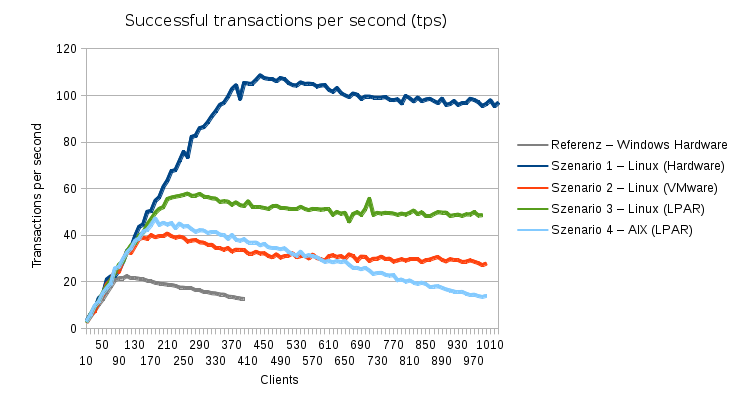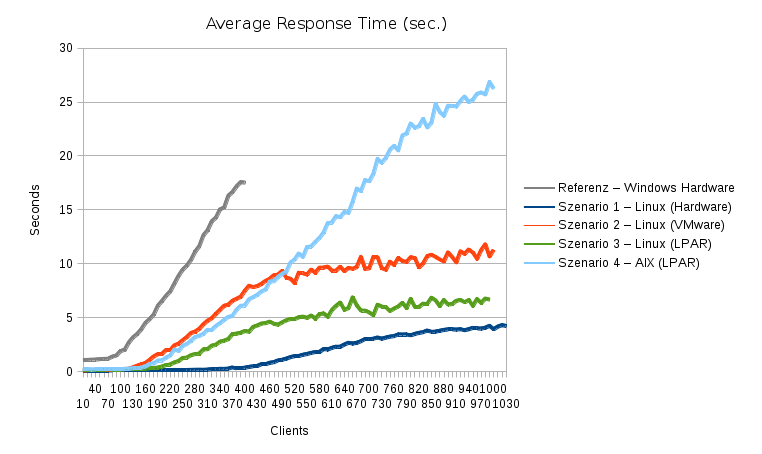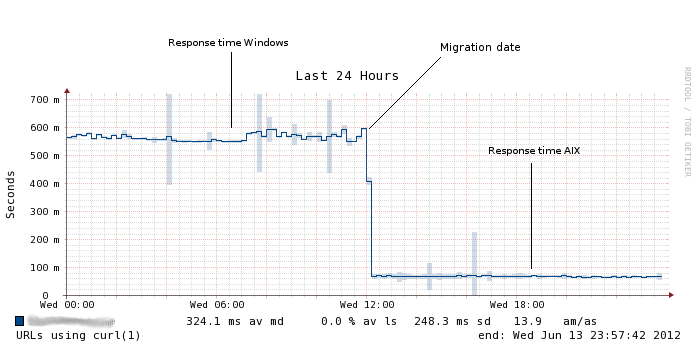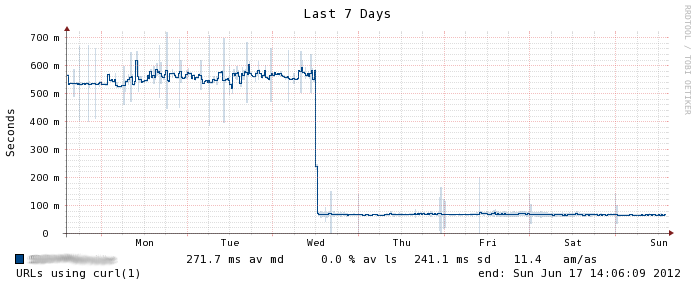2012-06-17 // Webserver - Windows vs. Unix
Recently at work, i was given the task of evaluating alternatives for the current OS platform running the company homepage. Sounds trivial enough, doesn't it? But every subject in a moderately complex corporate environment has some history, lots of pitfalls and a considerable amount of politics attached to it, so why should this particular one be an exception.
The current environment was running a WAMP (Windows, Apache, MySQL, PHP) stack with a PHP-based CMS and was not performing well at all. The systems would cave under even minimal connection load, not to mention user rushes during campaign launches. The situation dragged on for over a year and a half, while expert consultants were brought in, measurements were made, fingers were pointed and even new hardware was purchased. Nothing helped, the new hardware brought the system down even faster, because it could serve more initial user requests thus effectively overrunning the system. IT management drew a lot of fire for the situation, but nontheless stuck with the “Microsoft, our strategic platform” mantra. I guess at some point the pressure got too high for even those guys.
This is where i, the Unix guy with almost no M$ knowledge, got the task of evaluating whether or not an “alternative OS platform” could do the job. Hot potatoe, anyone?
So i went on and set up four different environments that were at least somewhere within the scope of our IT departments supported systems (so no *BSD, no Solaris, etc.):
Linux on the newly purchased x86 hardware mentioned above
Linux on our VMware ESX cluster
Linux as a LPAR on our IBM Power systems
AIX as a LPAR on our IBM Power systems
Apache, MySQL and PHP were all the same version as in the Windows environment. The CMS and content were direct copies from the Windows production systems. Without any special further tweaking i ran some load tests with siege:
Compared to the Windows environment (gray line), scenario 1 (dark blue line) was giving about 5 times the performance on the exact same hardware. The virtualized scenarios 2, 3 and 4 did not perform so well in absolute values. But since their CPU resources were only about 1/2 of the ones available in scenario 1, their relative performance isn't too bad after all. Also notable is the fact that all scenarios served requests up to the test limit of a thousend parallel clients. Windows started dropping requests after about 300 parallel clients.
Presented with those numbers, management decided the company webserver environment should be migrated to an “alternative OS platform”. AIX on Power systems was chosen for operational reasons, even though it didn't have the highest possible performance out of the tested scenarios. The go-live of the new webserver environment was wednesday last week at noon, with the switchover of the load-balancing groups. Take a look what happened to the response time measurements around that time:
Also very interesting is the weekly graph a few days after the migration:
Note the largely reduced jitter in the response time!







